- Home
- Quizzes
- My Quiz Activity
- Newsletters
- Sports Betting
- MY FAVORITES
- Add Sports/Teams
- SPORTS
-
NFL
- NFL Home
- Arizona Cardinals
- Atlanta Falcons
- Baltimore Ravens
- Buffalo Bills
- Carolina Panthers
- Chicago Bears
- Cincinnati Bengals
- Cleveland Browns
- Dallas Cowboys
- Denver Broncos
- Detroit Lions
- Green Bay Packers
- Houston Texans
- Indianapolis Colts
- Jacksonville Jaguars
- Kansas City Chiefs
- Las Vegas Raiders
- Los Angeles Chargers
- Los Angeles Rams
- Miami Dolphins
- Minnesota Vikings
- New England Patriots
- New Orleans Saints
- New York Jets
- New York Giants
- Philadelphia Eagles
- Pittsburgh Steelers
- San Francisco 49ers
- Seattle Seahawks
- Tampa Bay Buccaneers
- Tennessee Titans
- Washington Commanders
-
MLB
- MLB Home
- Athletics
- Arizona Diamondbacks
- Atlanta Braves
- Baltimore Orioles
- Boston Red Sox
- Chicago White Sox
- Chicago Cubs
- Cincinnati Reds
- Cleveland Guardians
- Colorado Rockies
- Detroit Tigers
- Houston Astros
- Kansas City Royals
- Los Angeles Angels
- Los Angeles Dodgers
- Miami Marlins
- Milwaukee Brewers
- Minnesota Twins
- New York Yankees
- New York Mets
- Philadelphia Phillies
- Pittsburgh Pirates
- San Diego Padres
- San Francisco Giants
- Seattle Mariners
- St. Louis Cardinals
- Tampa Bay Rays
- Texas Rangers
- Toronto Blue Jays
- Washington Nationals
-
NBA
- NBA Home
- Atlanta Hawks
- Boston Celtics
- Brooklyn Nets
- Charlotte Hornets
- Chicago Bulls
- Cleveland Cavaliers
- Dallas Mavericks
- Denver Nuggets
- Detroit Pistons
- Golden State Warriors
- Houston Rockets
- Indiana Pacers
- Los Angeles Clippers
- Los Angeles Lakers
- Memphis Grizzlies
- Miami Heat
- Milwaukee Bucks
- Minnesota Timberwolves
- New Orleans Pelicans
- New York Knicks
- Oklahoma City Thunder
- Orlando Magic
- Philadelphia 76ers
- Phoenix Suns
- Portland Trail Blazers
- Sacramento Kings
- San Antonio Spurs
- Toronto Raptors
- Utah Jazz
- Washington Wizards
-
NHL
- NHL Home
- Anaheim Ducks
- Boston Bruins
- Buffalo Sabres
- Calgary Flames
- Carolina Hurricanes
- Chicago Blackhawks
- Colorado Avalanche
- Columbus Blue Jackets
- Dallas Stars
- Detroit Red Wings
- Edmonton Oilers
- Florida Panthers
- Los Angeles Kings
- Minnesota Wild
- Montreal Canadiens
- Nashville Predators
- New Jersey Devils
- New York Islanders
- New York Rangers
- Ottawa Senators
- Philadelphia Flyers
- Pittsburgh Penguins
- San Jose Sharks
- Seattle Kraken
- St. Louis Blues
- Tampa Bay Lightning
- Toronto Maple Leafs
- Utah Hockey Club
- Vancouver Canucks
- Vegas Golden Knights
- Washington Capitals
- Winnipeg Jets
- NCAAF
- NCAAM
- Olympics
- Boxing
- Entertainment
- Lifestyle
- Golf
- MMA
- Soccer
- Tennis
- Wrestling
- More Sports
- RESOURCES
- My Account
- YB on Facebook
- YB on Twitter
- YB on Flipboard
- Contact Us
- Privacy Policy
- Terms of Service
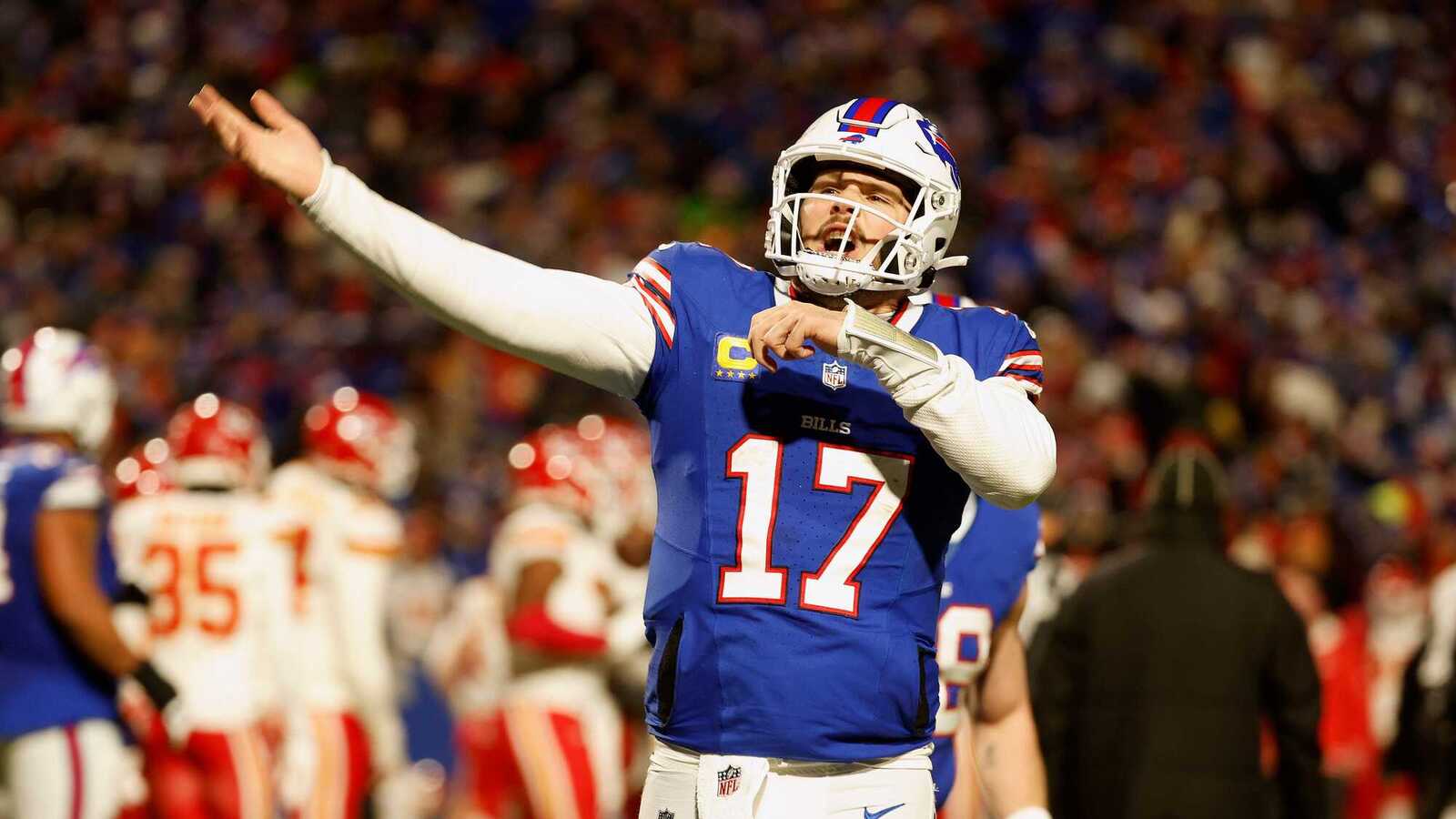
The biggest all-time move-ups in the NFL Draft
Quarterback trade-ups dominate NFL draft discourse today, but teams have made major moves up draft boards to acquire blue-chip talent at other positions for decades. The gambles have not always paid off, and trade values have fluctuated across eras. Here are the most memorable trade-up moves in the common draft era (1967-present).
2023: David Tepper bets big, drives Panthers to acquire Bryce Young
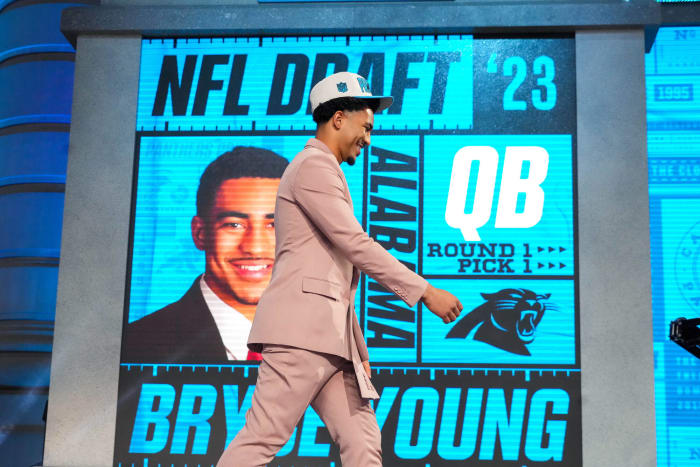
No team has knowingly acquired a No. 1 pick earlier than the Panthers, who obtained the top choice from the Bears before free agency began. Like the 49ers in 2021, the Panthers may not have reached a consensus on which quarterback they would take at the time they made the trade. Carolina gave up its 2024 first-round pick, D.J. Moore and two second-rounders for No. 1, with owner David Tepper making it known Young should be the pick. Adrift at QB since Cam Newton's injuries piled up in the late 2010s, the Panthers took their lumps after going 2-15. Tepper fired Frank Reich, linked to being a C.J. Stroud backer, and the 2024 pick became No. 1. Nowhere to go but up.
2021: 49ers recover quickly from Trey Lance misstep

Attempting to unlock dimensions Jimmy Garoppolo was deemed incapable of providing, the 49ers surrendered two future first-rounders and a third to climb from No. 12 to No. 3 via the Dolphins. Alabama's Mac Jones was the initial rumored target, as Trevor Lawrence and Zach Wilson were widely expected to go 1-2, but somewhere along the way the team zeroed in on Lance. The North Dakota State prospect only played one year in college, dominating as a redshirt freshman, before COVID-19 nixed Division I-FCS's 2020 season. Lance has been a colossal bust, making four starts in three San Francisco seasons. Brock Purdy has helped the 49ers recover, but dealing Lance to the Cowboys for a fourth-round pick capped quite the personnel debacle.
2020: Packers put clock on Aaron Rodgers era

It only cost Green Bay an additional fourth-round pick to move from No. 30 to No. 26 (via Miami) during the virtual draft, but we are still navigating the fallout. The Packers once bucked roster-building trends by sitting Rodgers for three years, but that came after they scooped up a falling Rodgers in 2005. The Pack trading up for Jordan Love, Division I-FBS's INT leader in 2019, without informing Rodgers caused a firestorm. Rodgers' feud with GM Brian Gutekunst raged throughout 2021, and the Love pick deprived Super Bowl-caliber rosters of early-2020s help. But Love's early promise, and Rodgers following the Brett Favre path to the Jets, could make Gutekunst come out ahead after years of criticism.
2018: Ravens strike gold with Joe Flacco successor

Despite Lamar Jackson claiming the 2016 Heisman Trophy, teams were concerned about his potential as a pure passer. This led to 21 non-QBs going off the board between the Cardinals' Josh Rosen pick (No. 10) and the Eagles' slot at No. 32. The Ravens already chose tight end Hayden Hurst in Round 1, but in his final draft as GM, Ozzie Newsome pulled off a deal to develop an intriguing QB behind Flacco. Climbing from No. 52, Baltimore sent Philly a 2018 fourth-rounder and a 2019 second. Quickly revamping their offense for Jackson, the Ravens -- who missed the playoffs from 2015-17 -- changed their trajectory by taking a chance on the Louisville dual threat.
2018: Bills pull off two-trade journey for Josh Allen
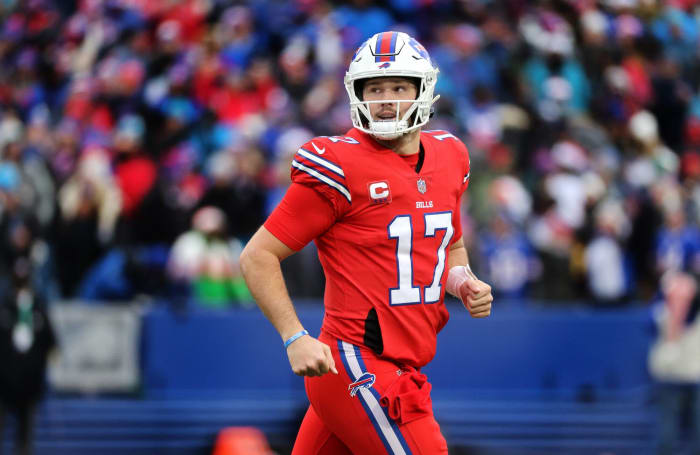
Backing into the playoffs in the Sean McDermott-Brandon Beane regime's first year, the Bills hatched a plan to fix a QB situation that had not been stable since Jim Kelly's 1997 retirement. In Beane's first draft as GM, the Bills traded up from No. 21 to No. 12 (via the Bengals, who acquired left tackle Cordy Glenn) and then moved to No. 7 (via the Buccaneers) by sending two second-rounders to Tampa Bay. The result: access to Allen, who has transformed from a tools-heavy prospect to a superstar. Allen's improved accuracy and whatever-it-takes scrambling M.O. lifted the Bills from mediocrity to perennial Super Bowl threat.
2017: Chiefs find Alex Smith upgrade, change franchise arc

The Steelers strolled into Arrowhead Stadium and won a divisional-round game without scoring a touchdown. Three months later, the Chiefs ditched the low ceiling of the Alex Smith years for a chance at new territory. Before the Bills became a Chiefs rival during Brandon Beane and Brett Veach's GM tenures, their predecessors -- Doug Whaley and John Dorsey -- agreed on a league-changing trade. To move from No. 27 to No. 10, Kansas City gave up a third-round pick and its 2018 first. McDermott and other AFC coaches have been dealing with the aftermath since Patrick Mahomes' stratospheric 2018 debut, with the Chiefs tripling their Super Bowl count during the Texas Tech alum's 20s.
2016: Eagles trade-up produces strange result
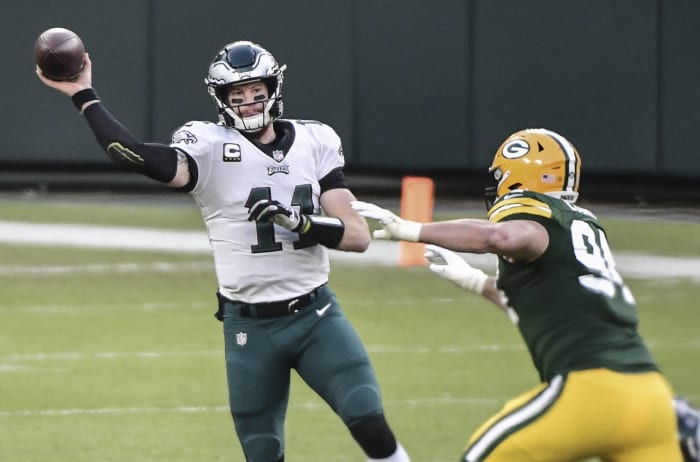
Shortly after the Chip Kelly firing, which restored Howie Roseman's personnel power, the Eagles dipped into future drafts to add a fast-rising QB prospect. Less than a week after the Rams acquired the No. 1 overall pick with an aim at Jared Goff, the Eagles moved up from 8 to 2 for Carson Wentz. Philadelphia sent Cleveland picks across three drafts, including its 2017 first- and 2018 second-rounders, for a passer who wowed during the pre-draft process but came from Division I-FCS North Dakota State. The Eagles initially appeared to come out well, with Wentz the MVP favorite in December 2017. His descent after a December 2017 ACL tear changed Philly's plans by 2020.
2016: Rams make splash in return to L.A.

In a move that ran counter to the approach Les Snead utilized in the years to follow, the Rams made a first-round pick in 2016. They traded up 14 spots to do so. The team moved from No. 15 to No. 1 (via the Titans) to land Cal's Jared Goff. It cost a first-rounder, two seconds and two thirds for the Rams to climb to 1, and Goff slogged through a brutal rookie year upon replacing Case Keenum. The Rams' 2017 Sean McVay hire changed Goff's path, and it preceded a host of splashy Rams moves (the "Eff them picks" era). Goff guided the Rams to Super Bowl LIII, though McVay souring on him -- via the Matthew Stafford trade -- became a win-win development.
2012: Star-studded Washington staff unable to make RG3 work
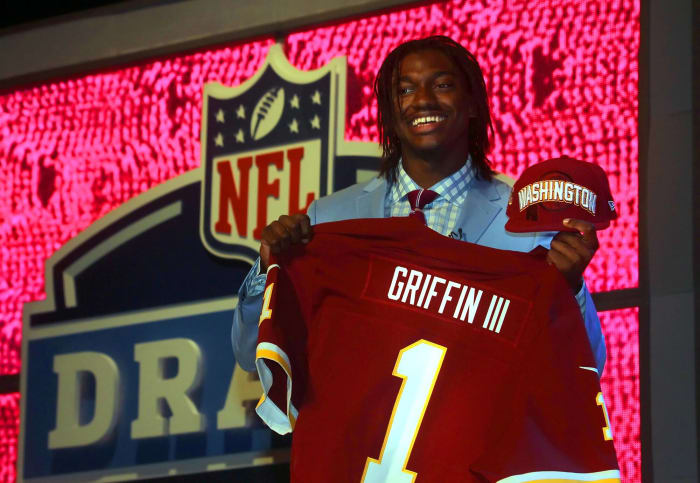
Mike Shanahan's first two Washington seasons featured a random course at quarterback. A declining Donovan McNabb and ex-Bears bust Rex Grossman were the team's primary starters from 2010-11. This situation prompted Washington to overpay to move from No. 6 to No. 2. The Rams charged Washington two future first-rounders and its 2012 second to move up for the draft's top non- Andrew Luck QB prospect. Robert Griffin III dazzled as a rookie, but an ACL tear and struggles as a passer doomed the prospect. Despite McVay, Kyle Shanahan and Mike McDaniel on staff, Washington could not keep RG3 on track. The team did well to backstop him with Kirk Cousins in the 2012 fourth round.
2011: Falcons burn Browns in Julio Jones strike
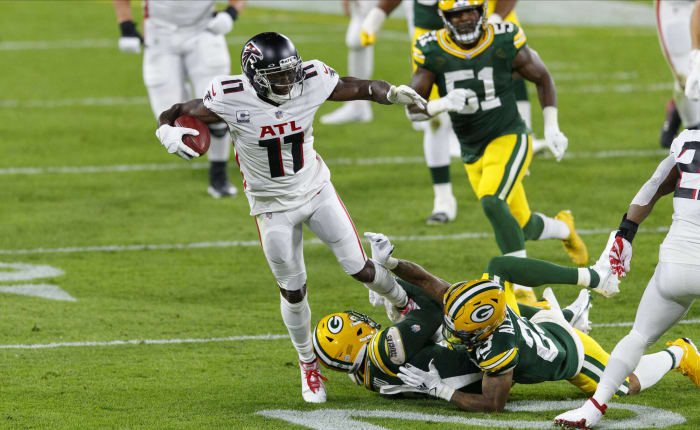
The 2011 draft occurring during a lockout prevented Falcons GM Thomas Dimitroff from including active players in his trade with the Browns. The Falcons still managed to move from No. 26 to No. 6. In this QB-style trade, Atlanta sent Cleveland its 2012 first-rounder and three other picks -- including its 2011 second-rounder -- to land Jones. In one of the great drafts in NFL history, Jones stood out. He of three straight first-team All-Pro nods in the 2010s, Jones has the best claim to being the greatest player in Falcons history. The Browns botched their end of the trade, acquiring no long-term starters -- in a haul that included QB Brandon Weeden -- with the extra picks.
2010: Busy Broncos night culminates with Tim Tebow
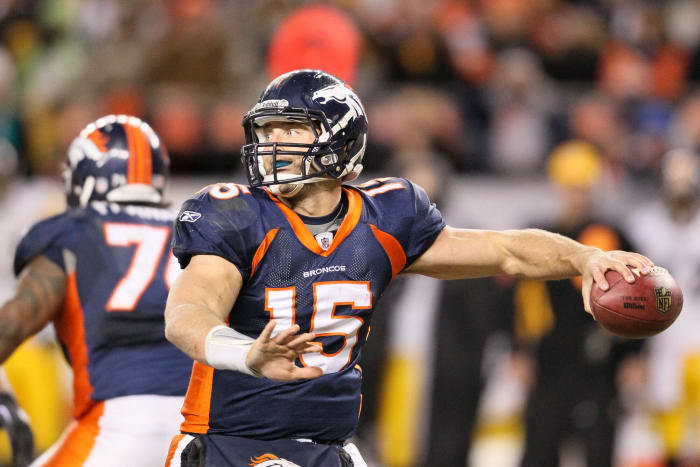
In the grand scheme, the Broncos trading up for Tebow does not qualify as a franchise-changer. Peyton Manning saw to that. But it is difficult to overstate Tebow's star power both at Florida and in the NFL. The flawed southpaw became a Josh McDaniels pet project. The Broncos traded down twice in Round 1 before moving up for Demaryius Thomas. At No. 25, however, McDaniels -- given de facto GM power post-Mike Shanahan -- pulled the trigger for Tebow, sending the Ravens second-, third- and fourth-round picks to climb 17 spots. This wild swing did produce a memorable 2011 season -- after McDaniels' ouster -- but Tebow's mechanics failed to improve. Manning's 2012 signing preceded a Tebow trade to the Jets.
2001: Contract talks lead to Chargers passing on Michael Vick
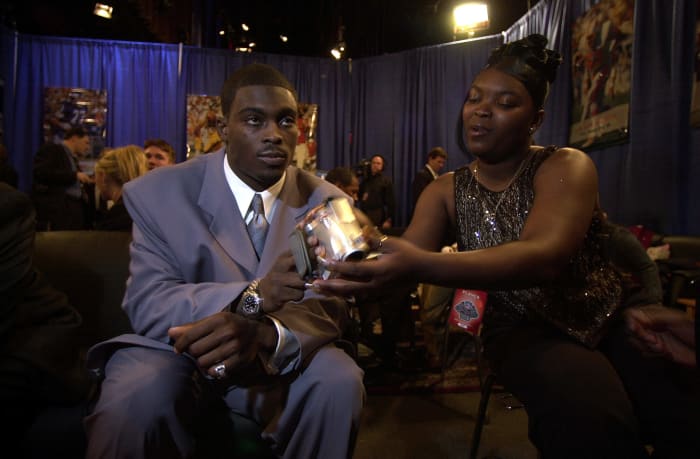
Before the 2011 CBA introduced the rookie pay scale, wiggle room existed for top prospects. This helped lead to the Chargers, who held the No. 1 pick, bailing on Vick. After the Bolts sought contractual safeguards to prevent a Ryan Leaf redux, Vick's camp balked. Soon after, the Bolts dealt the pick to the Falcons. The Chargers did not extract a haul from the Falcons, collecting only a 2001 third-rounder, a 2002 second and returner/receiver Tim Dwight. But San Diego sliding down led to LaDainian Tomlinson being the pick at 5. The team addressed its QB need with Drew Brees in Round 2. Vick electrified with the Falcons, but the infamous dogfighting scandal stopped his Atlanta tenure at six years.
1999: Mike Ditka stops at nothing to add Ricky Williams
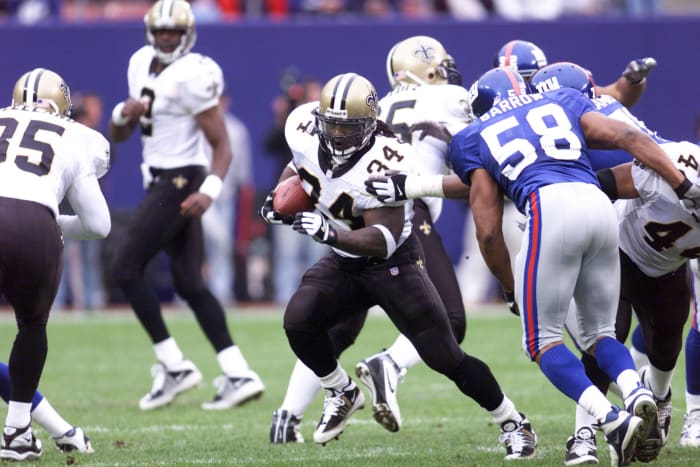
A fun footnote in the New Orleans-Washington trade: the Bengals turned down the Saints' mega-proposal. Sitting at No. 3, a Cincinnati franchise known to be a bit stubborn passed on Ditka's outlandish offer to take QB Akili Smith. After the Colts surprised by taking Edgerrin James over the 1998 Heisman winner, Washington accepted. The Saints sent Washington their entire 1999 draft, along with first- and third-round 2000 picks, for No. 5. Washington then jumped from No. 12 to No. 7 to draft Champ Bailey. Ditka was fired after the 1999 season, and the Saints traded Williams to the Dolphins in 2002. The Saints' 3-13 1999 record placed Washington's 2000 first-rounder at No. 2 overall.
1998: Colts' decision ends up crushing Chargers
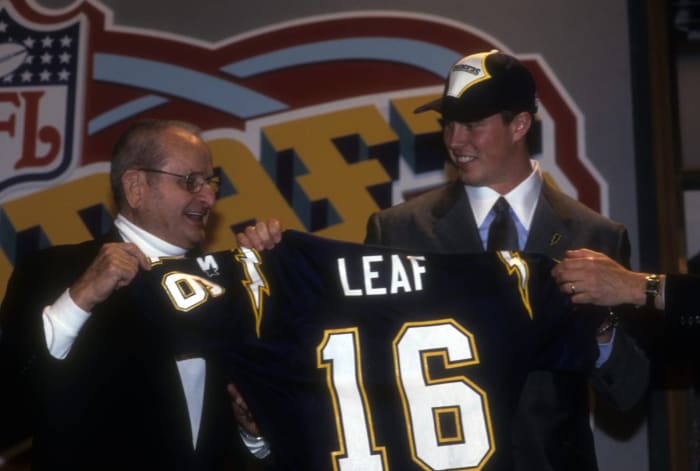
Entering this draft, Peyton Manning-or-Ryan Leaf qualified as a debate. The Colts going the other way would have brought Blazers- or Bears-level ignominy. Six weeks prior to this seminal event, the Cardinals charged the Bolts a bounty to move up one spot. Only climbing from No. 3 to No. 2, San Diego sent Arizona its second-rounder, its 1999 first and All-Pro return man Eric Metcalf. The Cardinals did not ace the picks ( Andre Wadsworth, David Boston), but the Chargers quickly discovered the gulf between Manning and Leaf. Replacing Jim Harbaugh as the Bolts' starter, Leaf played only four seasons and stands alongside JaMarcus Russell as the defining modern QB busts.
1997: Peyton Manning decision keys Jets-Rams swap
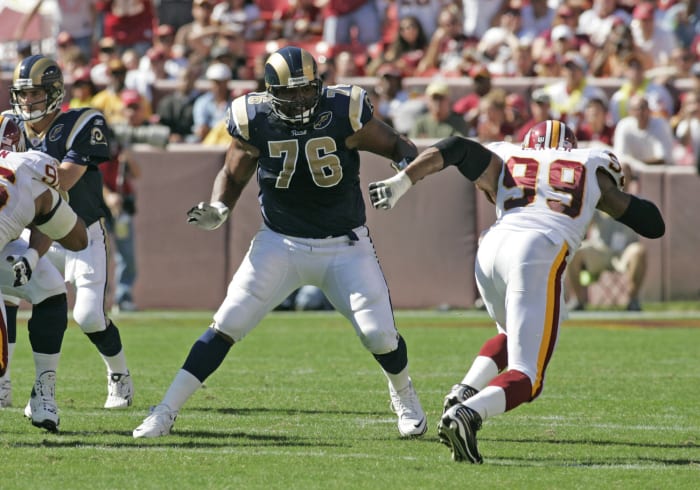
The NFL world did not see a Manning-Bill Parcells partnership come to pass, with the future Colts draftee passing on leaving Tennessee after his junior year. In what was suddenly a weak QB draft, the Jets -- who already had two high-priced tackles (Jumbo Elliott, David Williams) on their roster -- traded out of No. 1. The Rams moved up from 6 to 1 for Orlando Pace. New St. Louis HC Dıck Vermeil had observed Pace's Ohio State work from the ABC booth. Holding personnel power, the returning NFL leader traded third-, fourth- and seventh-rounders to move up for a player that spent 12 years -- en route to the Hall of Fame -- as the Rams' left tackle.
1995: 49ers' J.J. Stokes trade causes AFC Central ripple

After receiving quality WR2 work from John Taylor for nearly a decade , the 49ers decided to swing for another high-end Jerry Rice sidekick. Coming off its Super Bowl XXIX win, San Francisco vaulted from No. 30 to No. 10 for Stokes. The Browns' haul did not exactly benefit them. Bill Belichick's team landed 1995 third- and fourth-rounders and a 1996 first to drop 20 spots. When it came time to make the additional first-round pick, the team originally set to do so no longer existed. The Browns' move ended up equipping the Ravens, who fired Belichick, with a No. 26 overall pick. Weeks after morphing into the Ravens, the franchise picked Ray Lewis. That wrinkle overshadowed Stokes' Terrell Owens-overshadowed 49ers run.
1993: Saints swap Defensive Player of the Year for Hall of Famer
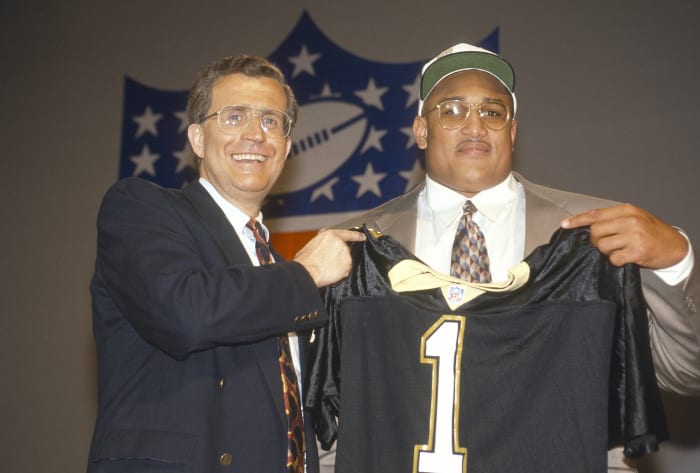
In 1992, the Saints decided to match a three-year, $5.4 million Lions offer sheet for reigning Defensive Player of the Year Pat Swilling. Detroit had inserted a no-trade clause as a poison pill of sorts, but New Orleans still matched it. A year later, however, the Lions offered first- and fourth-round picks to acquire the contract they designed. The Saints accepted, but the Lions needed to pay Swilling an extra $1.4M to waive his no-trade clause. Breaking up their Dome Patrol LB corps gave the Saints the No. 8 pick; they turned it into future Hall of Fame left tackle Willie Roaf. Swilling was out of Detroit by 1995, while Roaf played 13 years (nine as a Saint).
1990: Colts go 1-for-2 in Jeff George trades
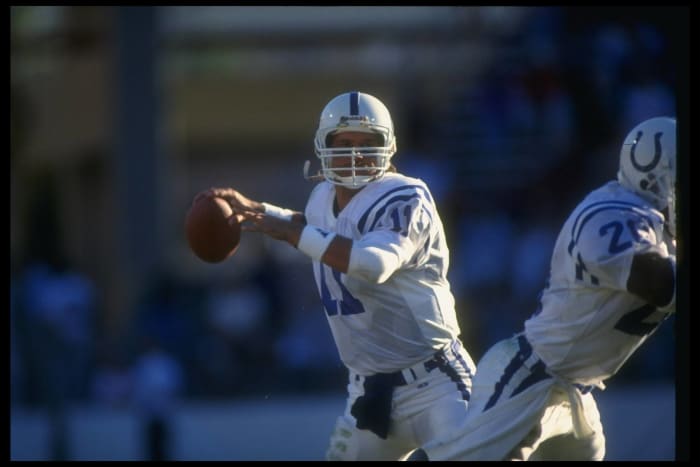
The Colts were wheeling and dealing at QB in 1990. Their first move brought a blue-chip prospect to town, but the Falcons pried Pro Bowlers and draft capital from the AFC East club. The Colts did not own a first-round pick entering draft weekend, having traded it to the Seahawks in 1988. This led to them sending the Falcons Pro Bowl tackle Chris Hinton, future Pro Bowl WR Andre Rison, a fourth-rounder and their 1991 first for to obtain No. 1 for George. Three months later, the Colts landed the 1992 No. 2 pick from the Buccaneers by trading Chris Chandler. George busted in Indy, but in an interesting twist, the Colts ended up with the Marvin Harrison draft slot when they dealt George to the Falcons in 1994.
1985: 49ers' scouting coup transforms record book
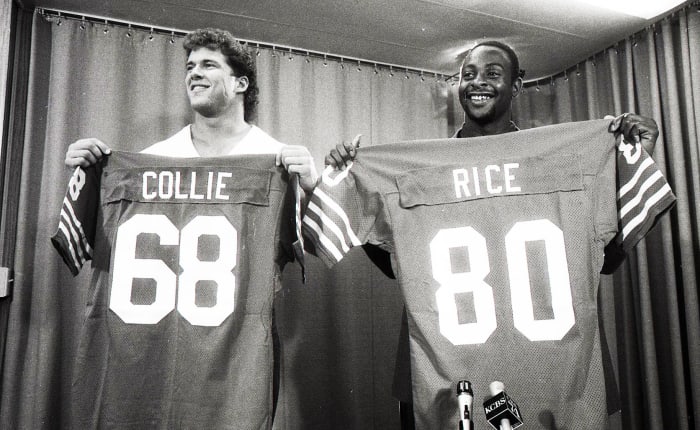
Between January and April 1985, the 49ers smashed the 14-2 Dolphins in Super Bowl XIX and completed a mission to land a wide receiver from Division I-AA Mississippi Valley State. After a more complicated scouting effort due to limited film access at the I-AA level, the 49ers saw wideouts Eddie Brown and Al Toon go off the board at Nos. 10 and 13. They found a taker in the Patriots, sending New England second- and third-round picks for No. 16. The 49ers even added the Pats' third-round pick in this swap. The result: Jerry Rice joins a dynasty in progress. Making 10 All-Pro teams as a 49er, Rice gapped the field to become the greatest wide receiver in NFL history.
1984: Steve Young USFL journey leads to Bengals pivot
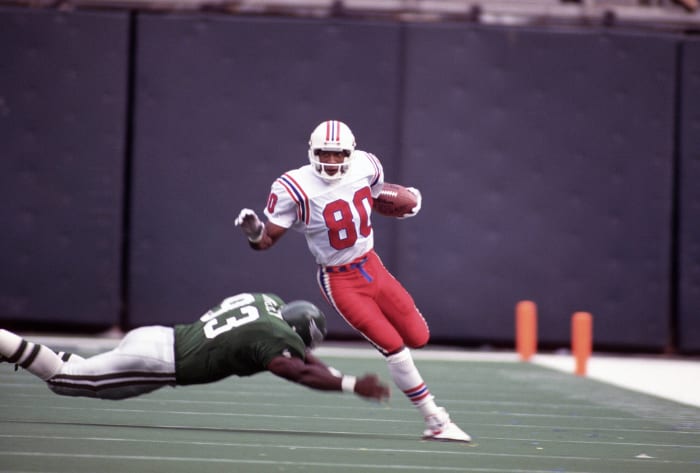
The 1984 top pick was passed along twice. A 1983 trade that sent the Buccaneers QB Jack Thompson ended up giving the Bengals the top pick , but with the USFL trying to compete, Cincinnati soon saw the upstart league sign top prospects Young and running back Mike Rozier. The Los Angeles Express' record-setting Young offer outflanked the Bengals' five-year, $3.5 million proposal, leading the AFC Central club to deal the top pick to the Patriots. New England forked over two first-rounders (Nos. 16 and 28), along with fifth- and 10th-round choices to move up for Nebraska wideout Irving Fryar. The former wishbone wideout played 17 NFL seasons, the first nine in New England.
1982: Two-year run of Colts QB draft blunders begins
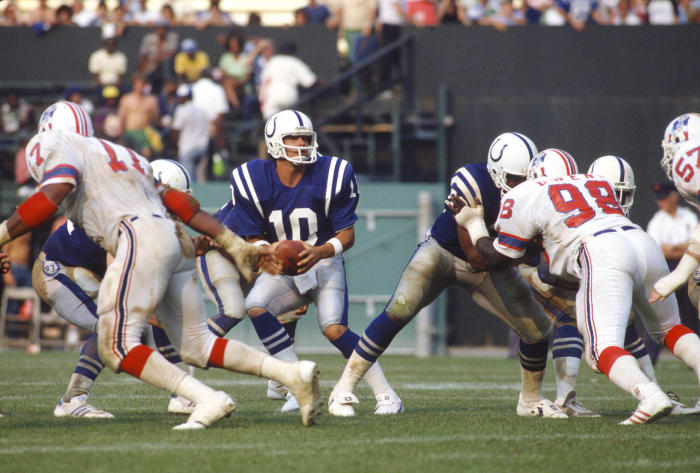
The Colts ended a bumpy Bert Jones relationship after nine seasons. The former MVP had clashed with divisive owner Bob Irsay and had become increasingly injury-prone. The strong-armed passer still commanded good trade value, with the Rams sending the Colts the No. 2 overall pick and their second-rounder. While the Colts turned the second-rounder into 13-year punter Rohn Stark, the QB they tabbed to replace Jones -- Ohio State's Art Schlichter -- became an all-time bust. After an 0-8-1 season, the Colts saw their QB suspended indefinitely for gambling. Schlichter, who was done by 1985, preceded the team drafting and trading John Elway a year later.
1980: Jets' miss on Lam Jones proves costly
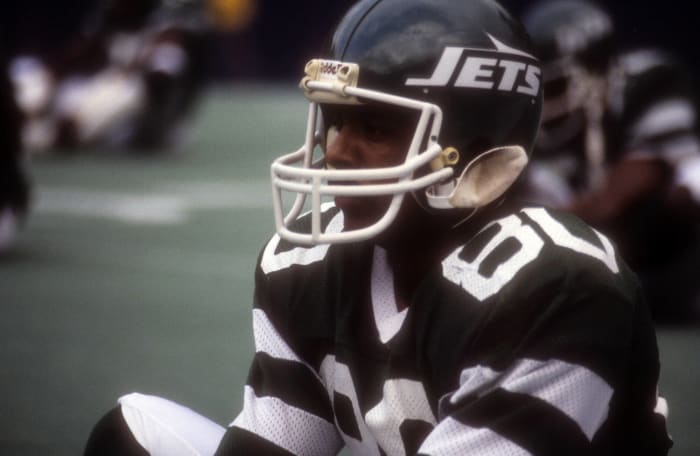
Jones was a track and field prodigy who not only made the 1976 U.S. Olympic team at age 18 but was part of a world-record 4x100-meter relay squad. This all occurred before Jones' football career at Texas. A world-class speedster tied to a wishbone offense, Jones still attracted considerable attention in 1980. The Jets sent the 49ers Nos. 13 and 20 for No. 2, selecting Jones with Anthony Munoz still on the board. Then-Jets HC Walt Michaels has said team doctors' concern about a Munoz knee injury prevented a move for the future Hall of Fame LT, but Jones failing to assimilate to the pro game goes down as a significant misstep for the Jets given the draft real estate.
1978: Buccaneers give Oilers Earl Campbell real estate
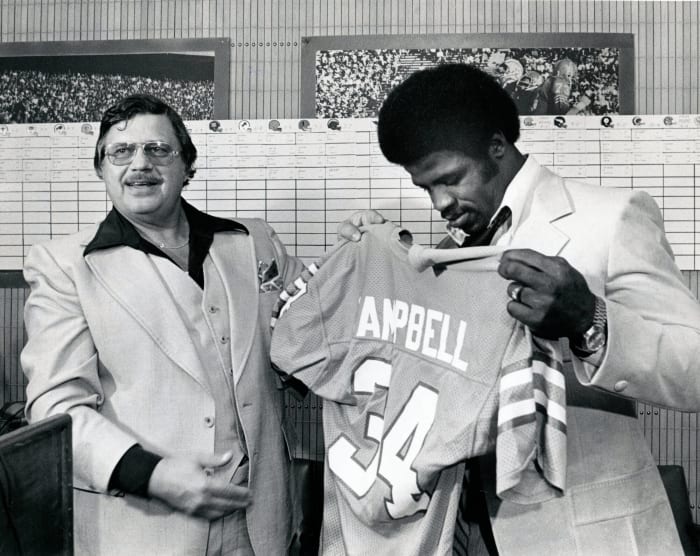
After drafting Ricky Bell first overall in 1977, the Bucs did not need a running back. But their trade haul for a better RB underwhelmed. The Oilers traded up from No. 17 to No. 1 to nab Campbell, the 1978 Heisman winner out of Texas, and did not surrender a future first-rounder. It cost Houston second-, third- and fifth-round picks to move up 16 spots. The Oilers traded 1977 third-round tight end Jimmie Giles as well. The Bucs did see Giles become a Pro Bowler and landed Doug Williams at 17, but Campbell became an immediate All-Pro who won MVP honors in 1979. En route to Canton, Campbell played the lead role in the Oilers venturing to two AFC championship games to close the '70s.
1977: Cowboys add missing piece in Tony Dorsett
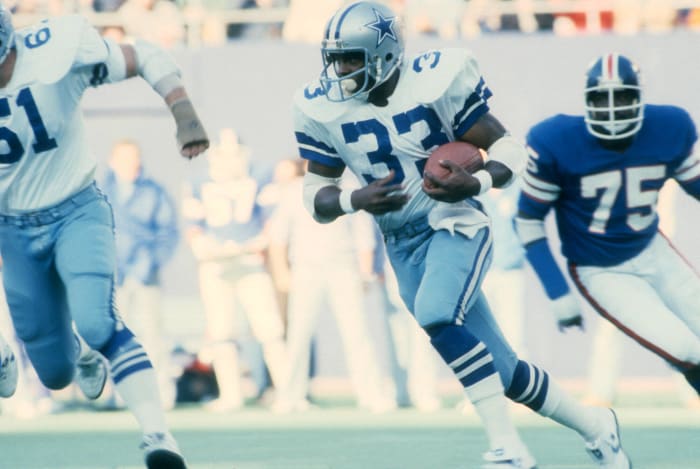
Viewing their backfield as a bit limited, the Cowboys gave it an era-defining jolt. Having acquired two extra second-round picks via 1975 and '76 trades, Dallas eyed the reigning Heisman winner. The Bucs chose Bell, and the Cowboys sent the Seahawks -- in their second draft as a franchise -- No. 14 and all three of their second-rounders for No. 2. Dorsett became an immediate difference-maker for Dallas, which assembled a Super Bowl-winning roster in 1977. Had the 1982 strike not happened, the speedy Hall of Fame-bound talent would have almost definitely ripped off nine straight 1,000-yard seasons. The Seahawks did not debut in the playoffs until 1983.
1975: Falcons find QB answer in Steve Bartkowski
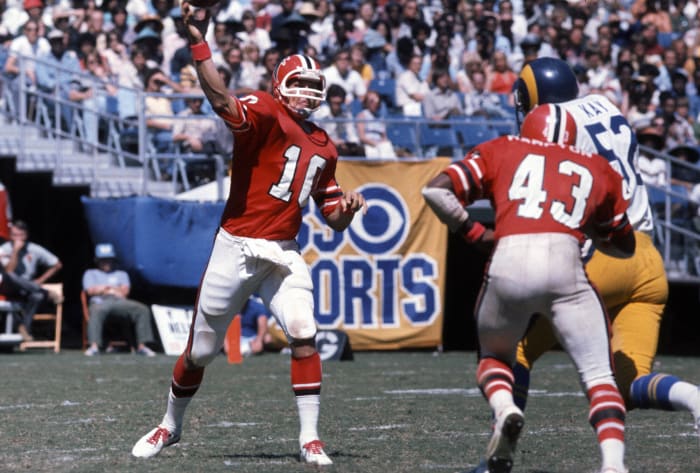
Only two trade-ups to No. 1 for quarterbacks occurred in the common draft era's first 34 years. The Colts and Falcons were involved in both. Fifteen years before Jeff George, Bartkowski was the prize. The Colts had a young QB -- Bert Jones -- on the verge of an MVP award. They used the No. 1 pick this year to build his O-line. Baltimore acquired former No. 2 overall draftee George Kunz, who was going into his age-28 season, from Atlanta to move down from No. 1 to No. 3. Bartkowski held the Falcons' QB1 job for 11 seasons, making two Pro Bowls. Kunz earned three more Pro Bowl nods as a Colt; he teamed with Baltimore's No. 3 pick (guard Ken Huff) for six seasons.
1974: Cowboys begin run of trades into top two
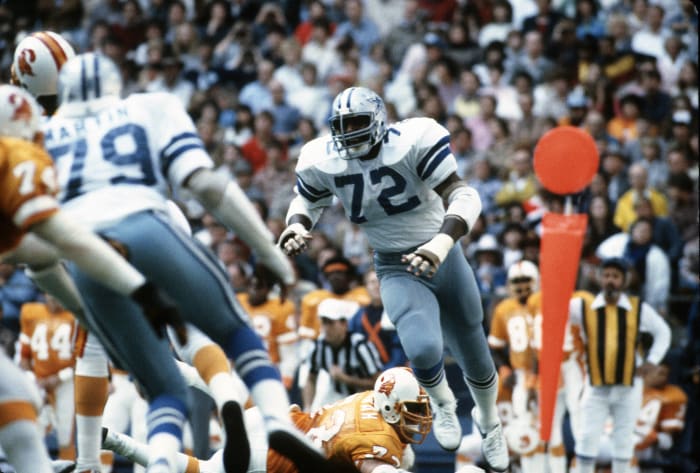
Between the 1974 and '77 drafts, the Cowboys acquired a No. 1 pick and two No. 2 overall selections. Dallas turned them into three cornerstones. Before Randy White and Tony Dorsett arrived, Ed "Too Tall" Jones was the Dallas target. The Cowboys' scouting machine zeroed in on an HBCU defensive end, and the Oilers did not charge them any picks. Despite going 1-13 in 1973, Houston sought veterans. Dallas sent over part-time wideout starter Billy Parks and young D-end Tody Smith. Both players were out of the NFL by 1977. Jones became one of his era's premier sack artists, playing 15 seasons. The other pick Dallas obtained in the deal -- a third-rounder -- became Roger Staubach QB successor Danny White.
1973: Colts move up, surprised by prize
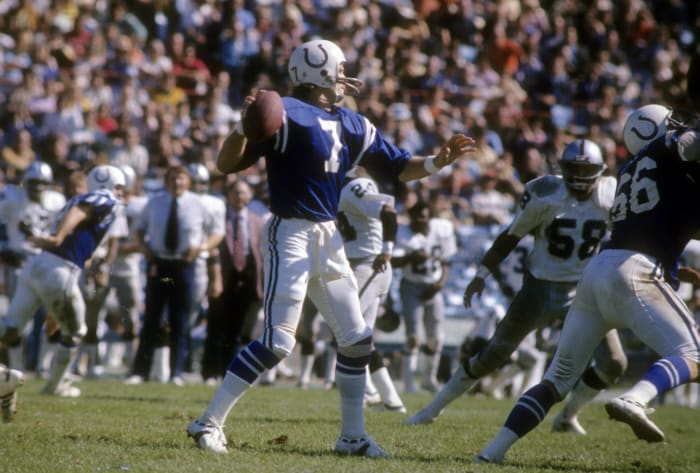
The Saints made some strange trades in their early days. This one would break the draft value charts of today. New Orleans unloaded the No. 2 overall pick for a fourth-year defensive end without a Pro Bowl nod (Billy Newsome) and a fourth-rounder. The Saints did not receive the Colts' first-round pick in the swap; Newsome was the centerpiece. The Colts also expected the team with the No. 1 pick -- the Oilers -- to draft Bert Jones. They instead went with D-lineman John Matuszak, a future Raiders and "The Goonies" contributor. Jones led a post-Johnny Unitas Colts turnaround in the mid-1970s, winning MVP acclaim in 1976. The Saints traded Newsome after two seasons.
1970: Browns equip Dolphins with WR legend
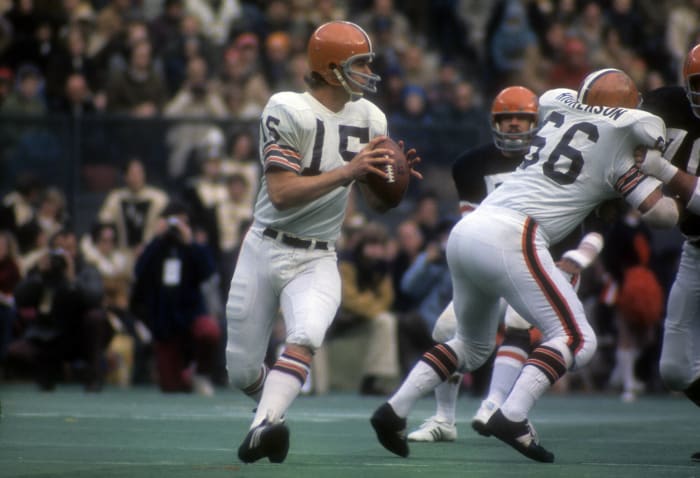
While Bartkowski was the first QB prize in a common draft-era trade-up, the Browns made a similar move five years prior. Their decision may well have ignited a Dolphins dynasty. This draft began with the Steelers choosing Terry Bradshaw. The Browns held the No. 21 overall pick, but they included a more attractive piece in a trade to vault to No. 3. For the right to draft Purdue QB Mike Phipps, Cleveland dealt Miami Paul Warfield. The All-Century WR (and Cleveland-area native) gave the Dolphins an elite pass catcher to start Don Shula's tenure. Art Modell had only eyed Phipps as Bill Nelson injury insurance at the time. Phipps served as a four-season starter in Cleveland.
1967: 49ers, Falcons complete strange trade
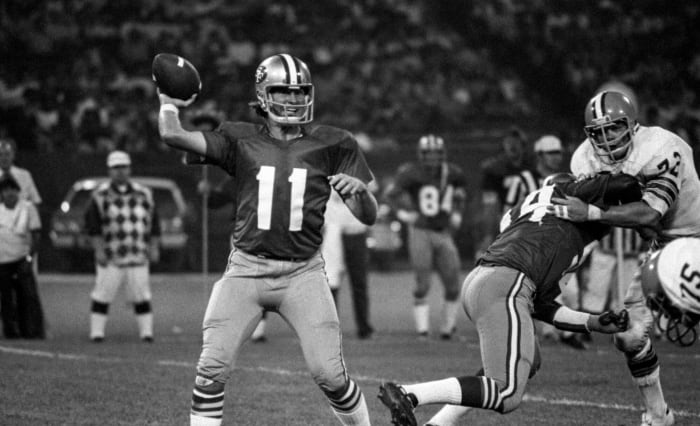
Prospects to enter drafts earlier in the 1960s could pit NFL and AFL teams against each other in bidding wars, but by 1967, the common draft era began. Thus, Steve Spurrier had no leverage when the 49ers traded up (via the Falcons) to No. 3 to make him a backup for what turned out to be many seasons. The Heisman winner led off the QBs in the '67 draft, with the 49ers sending the Falcons three veterans (wide receiver Bernie Casey and two backup O-linemen -- Jim Norton, Jim Wilson). This proved a strange trade all-around. The Falcons traded Casey, a burgeoning actor, to the Rams that year; he made the Pro Bowl in L.A. Wilson and Norton were done by 1968. Spurrier played 10 years but backed up John Brodie for five.
1967: Colts fleece Saints for Bubba Smith
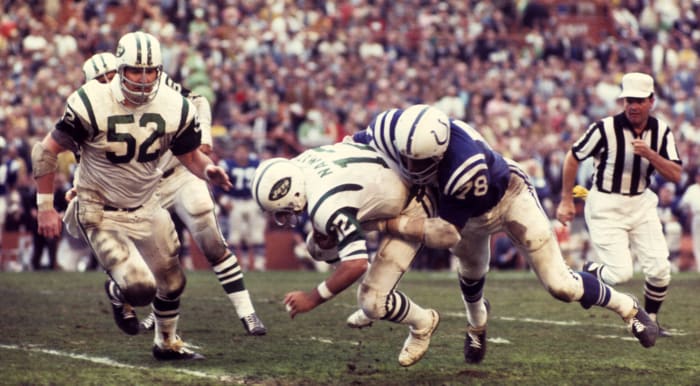
Midway through Don Shula's head coaching stay, the Colts took advantage of an expansion team. The Saints' first draft started late to the team sending the No. 1 overall pick to Indianapolis in a package fronted by former Johnny Unitas backup Gary Cuozzo. A former undrafted QB, a 17th-round pick and a second-year player who never played for the Saints became the package for not just the No. 1 pick but promising young center Bill Curry and a third-round pick. New Orleans did extract a big haul from Minnesota for Cuozzo in 1968, but this value debacle gave the Colts an impact pass rusher (Smith) and a future Pro Bowl center. Both earned Super Bowl rings by 1971.
Sam Robinson is a sportswriter from Kansas City, Missouri. He primarily covers the NFL for Yardbarker. Moving from wildly injury-prone sprinter in the aughts to reporter in the 2010s, Sam set up camp in three time zones covering everything from high school water polo to Division II national championship games
More must-reads:
- Broncos complete draft class signings with Troy Franklin deal
- Drake Maye reportedly being treated as Patriots' QB3
- The 'AP NFL Comeback Players of the Year' quiz
Breaking News
Customize Your Newsletter
 +
+
Get the latest news and rumors, customized to your favorite sports and teams. Emailed daily. Always free!
PRIVACY POLICY EDITORIAL POLICY CONTACT US
ABOUT YARDBARKER TERMS OF SERVICE
Use of this website (including any and all parts and
components) constitutes your acceptance of these
Terms of Service and Privacy Policy.
This site is for entertainment purposes only.
There is no gambling offered on this site.
Gambling Problem? Call 1-800-Gambler.
